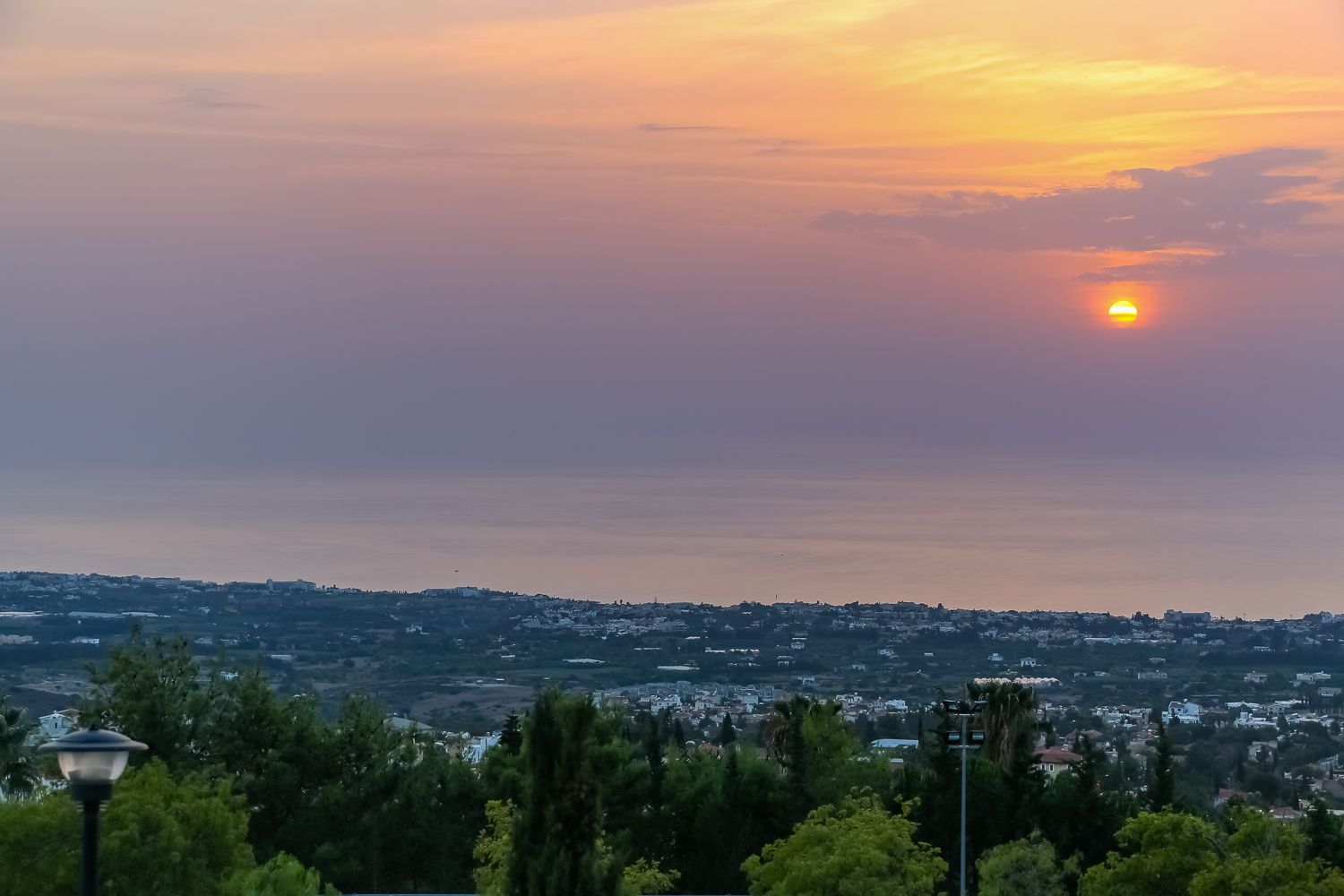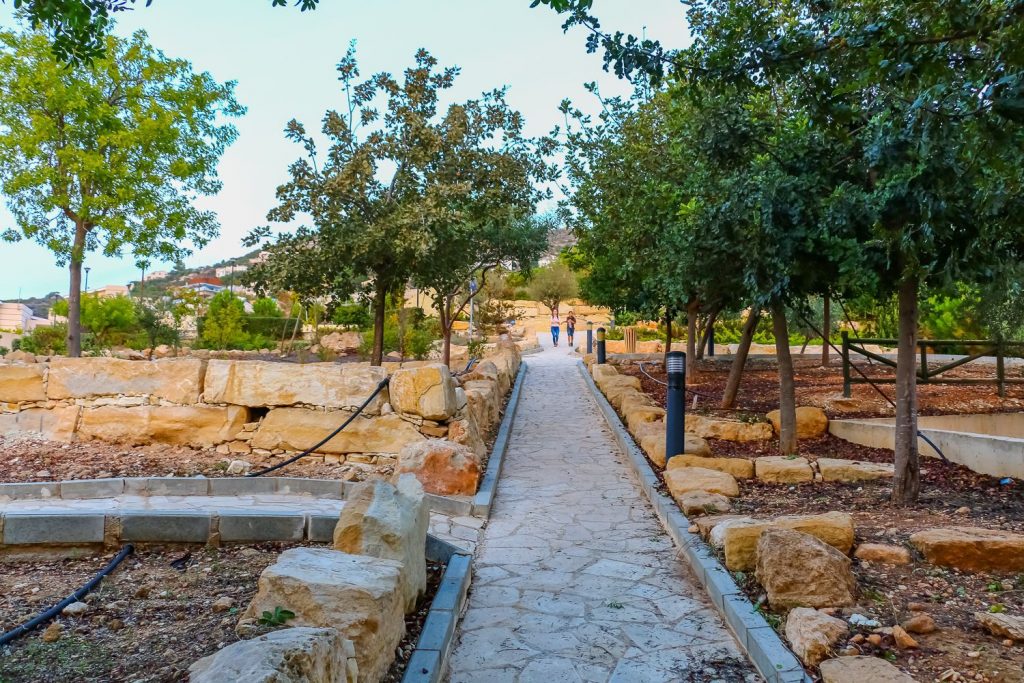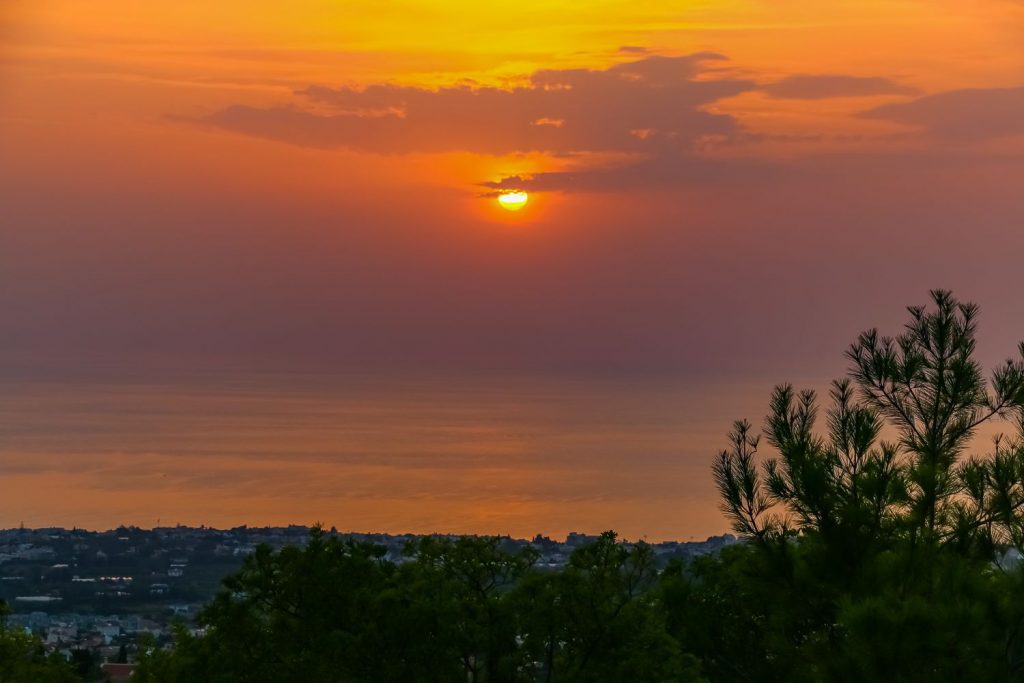Tala

Tala is a village in the province of Paphos in Cyprus and it is situated 11 kilometers north of the homonymous city, 73 kilometers northwest of Limassol and 160 kilometers southwest of Nicosia. Located at an altitude of 280 meters and combining beautiful mountain and sea views, Tala is an area where vineyards (wine and table varieties), citrus, carob, olive, almond and walnut trees, grain and vegetables are cultivated, after having benefited from the irrigation project of the Asprokremos dam.
The village is not mentioned in medieval sources, although its name is believed to have originated during the Frankish period, from the surname of a wealthy family of nobles of Cyprus, the family of d’ Avila, to whom the settlement then belonged as a fief. However, there are also indications of earlier habitation in the area, as evidenced by the archaeological site of Prehistoric times that was discovered to the south of the village.
Nowadays, a developed and highly touristic destination, a breath away from the capital of the province, Tala has three remarkable firsts in Cyprus. The community is the only one on the island of Aphrodite that has an equal number of foreign permanent residents and local Cypriots, numbering about 5,000. As a result of the strong housing development of the last decades, Tala attracted a large number of foreigners (2,500 British, Russians, Arabs, Norwegians and others) who chose it for its good climate and proximity to Paphos and its strong infrastructure. The other one is regarding the type of tourism that the village attracts. It is considered to be the only community in the province of Paphos and possibly the only one in the whole island, in which tourism has a purely religious content. The world-renowned Monastery of Agios Neophytos, the most important attraction of Tala, is located some 3 kilometers northeast of the village and attracts thousands of tourists every year from all parts of the world and especially from Russia.
The third “first” of the area has to do with its natural environment. At the “Stefanou” site, there are the “kapnismata”, towering trees that have a height of more than 10 meters and have a palm-shaped foliage. These unique trees of Cyprus can be found only here and in an area in the Middle East. Their peculiar name came from the fact that the bark of the tree secretes a kind of tar used in the church to burn instead of the incense (kapnisma means “smoking, smoked” in Greek). Although it is unknown how these trees were found or grew here, the tradition states that Saint Neophytos brought them with him when he returned from the Holy Land. Efforts to transplant kapnismata into other areas have been fruitless, and so the species have grown for several centuries only in the Tala region.
The populous settlement offers many options to its guests as there are many restaurants and taverns, cafes and cafeterias, while for their stay in the area there are many options for accommodation for different budgets, as well as touristic villages. In the community many modern houses have been erected by locals and foreigners, mansions and villas, which are used either for a permanent residence or as a holiday cottage.
The village is also known for the advancement of many traditional crafts that survive to this day, such as woodcarving and the decoration of zucchinis with their representatives so few, they can be counted on the fingers of one hand. Something that also deserves mentioning in the area are the well-kept parks (such as the Community Park “KONSTANTINOS LEVENTIS” with the beautiful amphitheater) and the Multicultural Arts Center.
One of the most important sights of the community is the central church of Saint Catherine of the 15th-16th century, an important monument visited by thousands of tourists every year. The medieval temple is a one-aisled dome building, which has been modified and expanded to serve the needs of the faithful. Today’s church is the result of this extension and reconstruction of the older arched church that was shorter in length. In the center of the western wall there is the original door, while the rest is of a later date. From the original church there are some frescoes under the limestone of the western wall that represent the Second Coming.
In the “Stefanou” area is also the chapel of Agios Georgios, which was restored in 1990. According to sources, there is where the old homonymous village was situated in the 16th century, since in the ruins of the church there were found remains of another temple, dedicated to St. Stephen. The chapel of Agii Saranta was restored in 1994, while the chapel of Agia Marina was built with the donation of Princess Zenas Kanther Detiras, who comes from the region and has made many donations all over Cyprus.
The place has another reason to be proud of, as it is the birthplace of the 94th Archbishop of Cyprus, Chrysostomos II. Herodotus Demetriou, as is his birth name, who remains an active member of the local community despite his strictly religious duties, learned his first letters in the village and later became a monk in the Saint Neophytos Monastery.
The Hero’s monument at the APIS site, near the administrative borders of Tala and Kissonerga, is dedicated to the fallen Miltiadis Stylianos and Christos Kelis, who gave their lives during the liberation struggle of EOKA against the British in 1955-1959.




